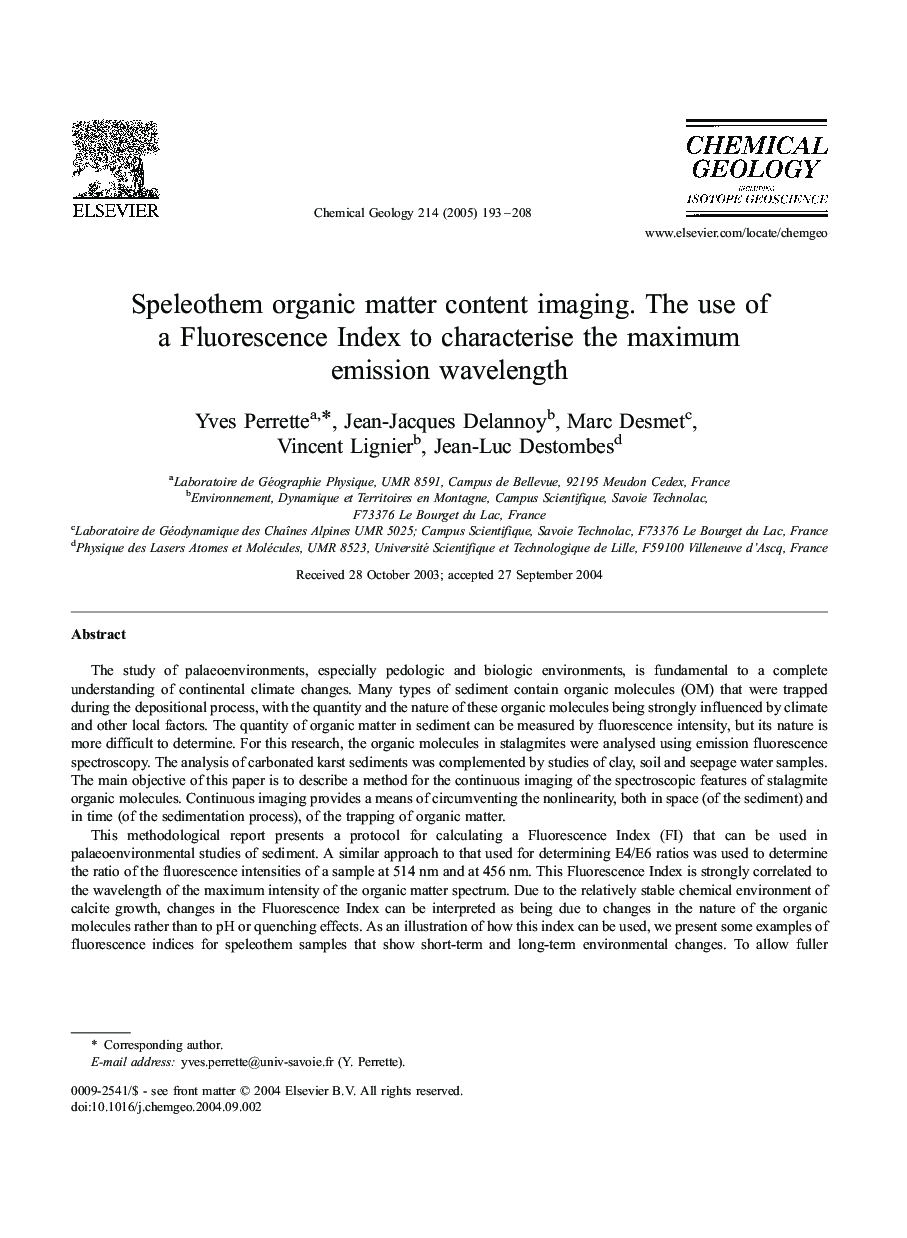| Article ID | Journal | Published Year | Pages | File Type |
|---|---|---|---|---|
| 9529232 | Chemical Geology | 2005 | 16 Pages |
Abstract
This methodological report presents a protocol for calculating a Fluorescence Index (FI) that can be used in palaeoenvironmental studies of sediment. A similar approach to that used for determining E4/E6 ratios was used to determine the ratio of the fluorescence intensities of a sample at 514 nm and at 456 nm. This Fluorescence Index is strongly correlated to the wavelength of the maximum intensity of the organic matter spectrum. Due to the relatively stable chemical environment of calcite growth, changes in the Fluorescence Index can be interpreted as being due to changes in the nature of the organic molecules rather than to pH or quenching effects. As an illustration of how this index can be used, we present some examples of fluorescence indices for speleothem samples that show short-term and long-term environmental changes. To allow fuller palaeoenvironmental interpretations to be made, fluorescence indices need to be calibrated to environments and samples need to be dated.
Related Topics
Physical Sciences and Engineering
Earth and Planetary Sciences
Geochemistry and Petrology
Authors
Yves Perrette, Jean-Jacques Delannoy, Marc Desmet, Vincent Lignier, Jean-Luc Destombes,
